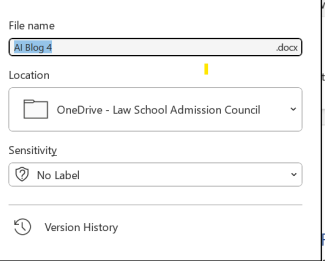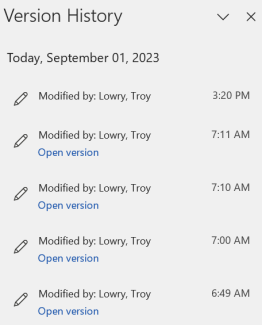One Idea for Tackling the ChatGPT Challenge in Education
By Troy Lowry
The rise of generative AI, notably ChatGPT, in academic settings poses a challenge to maintaining academic integrity. It's an issue that calls for both understanding and actionable solutions. For a detailed dive into how technologies like ChatGPT operate, journalist Timothy Lee and cognitive scientist Sean Trott’s informative blog post is a must-read, offering an explanation of large language models with a minimum of math and technical jargon.
The Calculator Conundrum: Then and Now
When I was in high school in the 1980s, the introduction of calculators into classrooms sparked concerns about academic honesty like those around ChatGPT now. They also raised concerns about the potential erosion of fundamental skills. Schools were worried, but over time, they adapted. In my own experience, my school tackled this by not allowing calculators at school. This adaptation suggests a way forward, but it is one that does not reflect the reality that awaits practicing lawyers, most of whom will be free to use tools like ChatGPT as they see fit.
Based on his school experience, Lee offers a different perspective. There, students were free to use calculators, but they had to “show their work.” The aim of this policy wasn’t to emphasize the importance of the process over the answer; rather, it served as an anti-cheating measure. By requiring students to reveal their step-by-step calculations, educators could more confidently verify that the students understood the material and hadn’t obtained their answers from external sources.
The "Show Your Work" Solution: A Digital Twist
Lee proposed that the same “show your work” concept could apply to written assignments.
How?
Through the version history feature available in applications like Microsoft Word and Google Docs, which offer a periodic snapshot of the document's changes, effectively revealing the writer’s thought process.
In fact, as I sit here writing in Microsoft Word, I can see the version history updating every 10 minutes with anything new typed into the form. To get to it, I just had to click on the title of the document at the top and click on “Version History” below. A similar feature exists in Google Docs.

A pane shows up on the right-hand side that allows me to go visit any of the previous versions. When I click on them, it opens that past version, and I can see what was happening at that point of creating the document.

As I’ve been working on this blog post, I can verify that a document of any significant length will have many entries in revision history. Just looking at the above, you can see that even this short blog post shows many revisions. A setting can also be changed to make those versions more frequent, if desired.
At the very least, requiring students to keep their revision history is a way in which a teacher confirm a student’s writing process. If there is only a single entry, then the student is either an incredibly fast writer, or they cut and pasted the text from elsewhere. That “elsewhere” could certainly be ChatGPT. If, however, the version history shows definitively that the document was built over time, as would happen when writing, then it is highly unlikely ChatGPT was used.
Of course, people have found ways to bypass rules since time immemorial, and a smart student could still use ChatGPT while faking the version history. For instance, they could add one new paragraph every ten minutes. Or they could have ChatGPT write the assignment and then type it into word. Still, this raises the amount of effort required by the student substantially and is a strong deterrent.
Potential Objections: The Fine Print
However, using the version history as a teaching tool has its drawbacks. For one, reviewing version histories would mean more work for educators, who already have their hands full. Moreover, the mental toll it may take on students should also be considered; knowing that their “drafts” could be scrutinized may inhibit their writing process.
On the flip side, this method offers the potential for a more nuanced understanding of where a student may need help, thereby enabling educators to provide more targeted feedback. Just like showing work in math has helped teachers identify and fix students' weaknesses, this revision history feature could serve a similar purpose in writing.
Conclusion: An Extra Tool in the Educational Toolkit
While it may not be the perfect solution, the idea of using version history to validate a student's work deserves consideration. It could serve as an additional measure to ensure academic integrity in a landscape increasingly influenced by AI technologies like ChatGPT.
It may require tweaking and adjustment to fit the needs of different educational settings, but it’s undoubtedly a thought worth exploring further.
